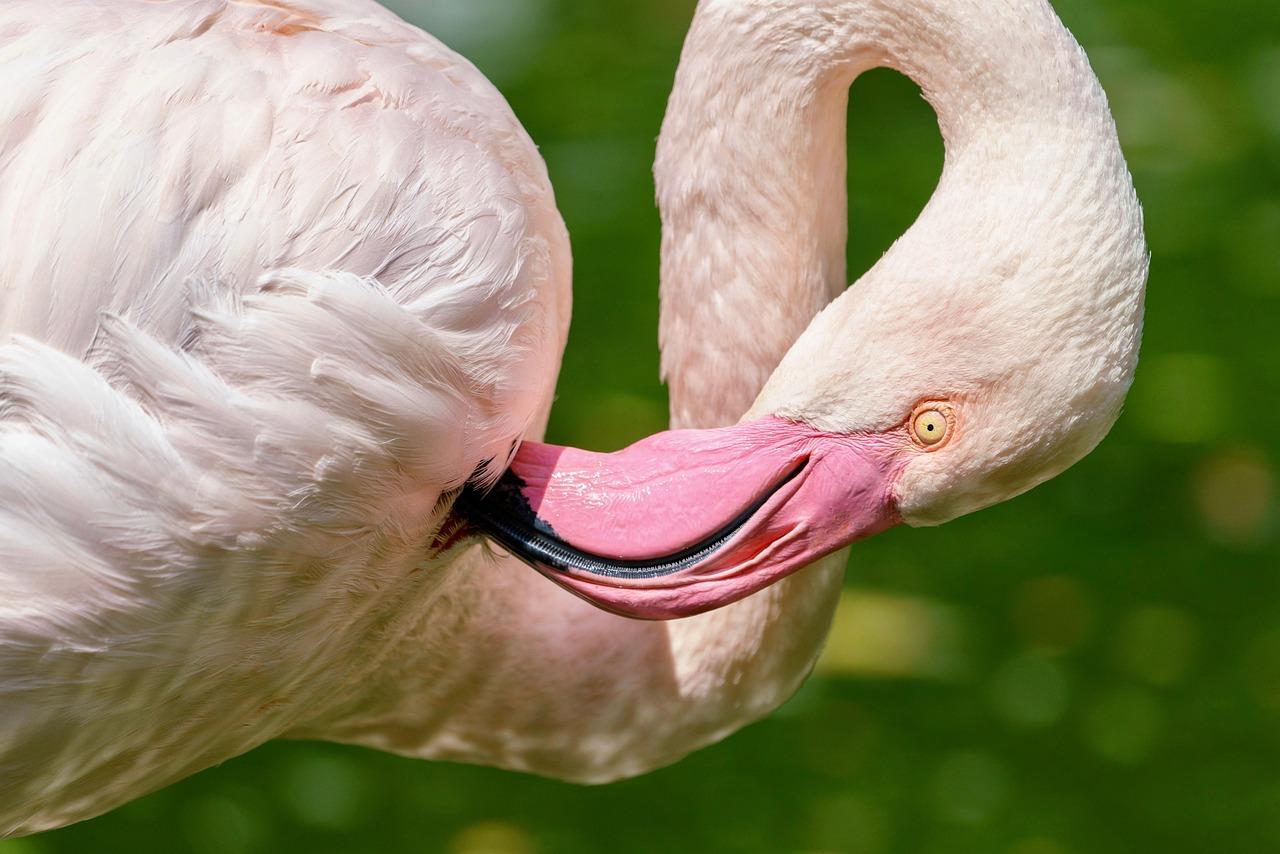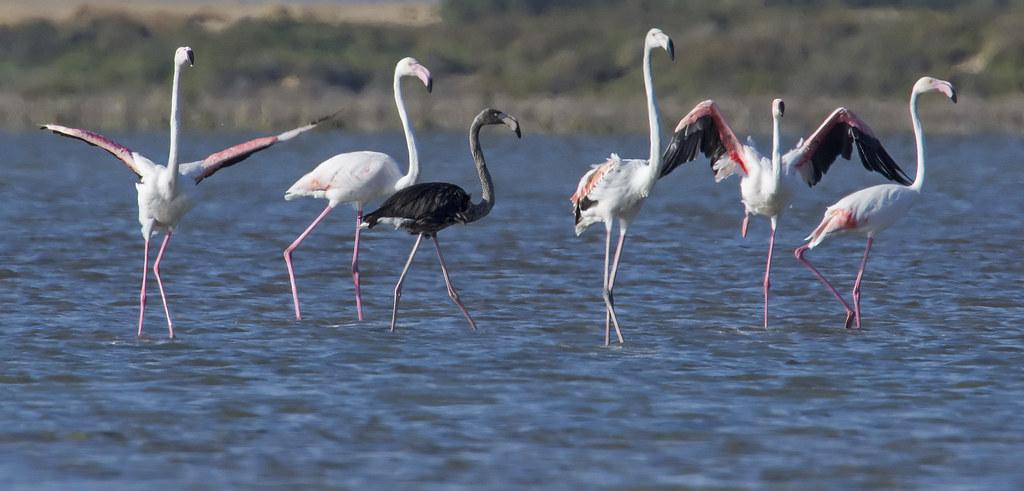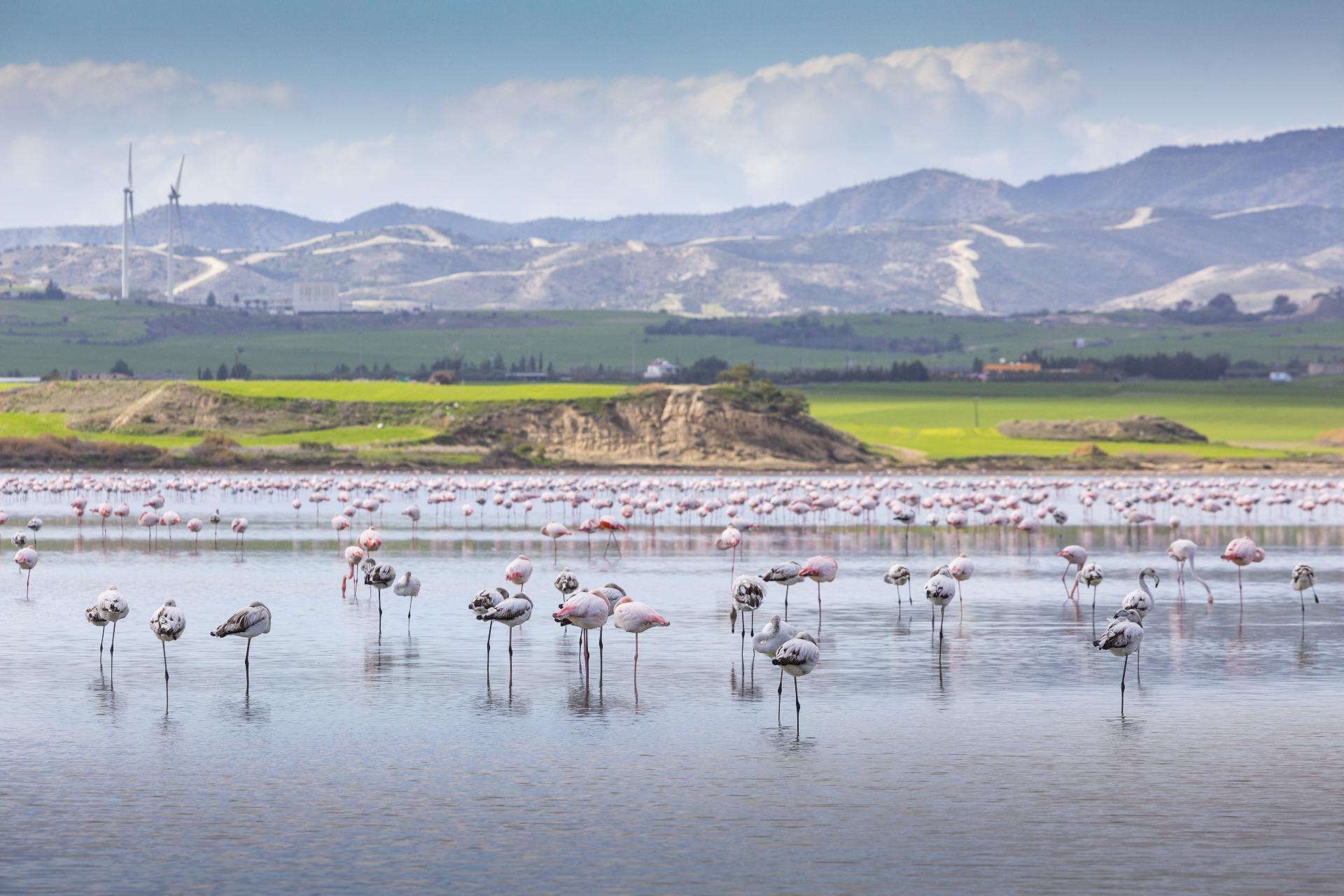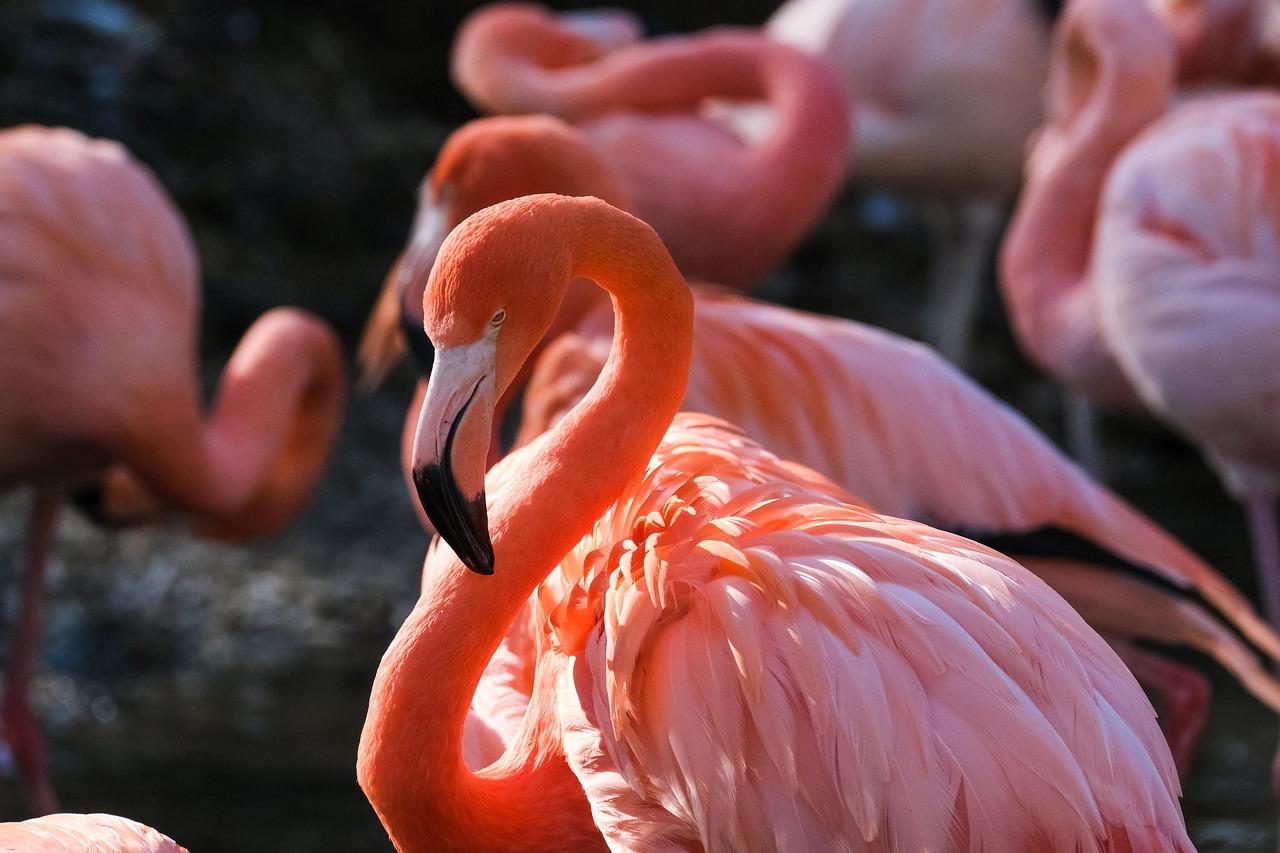Flamingos are surely among the most beautiful birds in the world — with elongated curved necks, elegant postures, graciously thin legs, and stunning pink colours, ranging from pale pink to magenta hues.
You might have already seen them — on Cypriot postcards or in the island’s travel brochures. These brightly coloured avians frequent the island's salt lakes, transforming them into pink reservoirs, visible from the distance or from aerial view. This might make one wonder — are there many flamingos in Cyprus?
Although they are not native to the island, these amazing creatures have become a seasonal attraction to locals and tourists, luring avid birdwatchers and visitors to the island’s salt lakes in the winter season.
In this article let's delve deeper into the life of these gorgeous creatures and the island's rich biodiversity and ecosystem. Here, you will discover where to find flamingos in Cyprus and learn about their favourite spots. We will also provide useful observation tips to make the most out of your experience. And, of course, we will tell you when is the best time to see the flamingos in Cyprus, so you wouldn't miss your chance.

Why flamingos choose Cyprus
Being at the crossroads of Africa, Europe and the Middle East, Cyprus is at the heart of flamingos’ migration route.
Also, the island has a very diverse, albeit fragile ecosystem with salt lakes playing an integral role in the island's biodiversity.
Completely dry and lifeless in summer, the lakes come to life in winter, filling up with water that provides an ideal habitat for brine shrimp, tiny molluscs and crustaceans. Together with blue green algae and diatoms, they are the main flamingo diet staples.
Fun fact: Did you know that the pink hue of flamingos’ feathers comes from their diet? Brine shrimp and algae, rich in carotenoids create that rich pink pigmentation.

Which flamingo species come to Cyprus
The most common variety found here, especially in the Larnaca region, is the «greater flamingo» (phoenicopterus roseus). Reaching up to 150cm in height they are the largest flamingoes in the world. They can be found mostly in Africa, Asia and parts of southern Europe. A more rare guest is the «lesser flamingo» (phoeniconaias minor). They are much smaller and more vivid, and grow up to 90 cm in height.
And, if extremely lucky, there’s a chance to see a very rare and uniquely beautiful «black flamingo». But, this is not a separate species. Rather, it is a genetic mutation caused by melanism which creates dark pigmentation, turning feathers stark black. This rare bird certainly stands out from the crowd and looks almost surreal amongst its magenta hued counterparts. First spotted in Cyprus in 2014 in Akrotiri Lake , close to Limassol, it has been returning on several occasions in the following years.

Flamingo migratory patterns
Flamingos follow a set pattern, governed by the seasonal changes in their main habitat — saline lakes. During spring they usually stay on their breeding grounds, where they lay eggs and raise offspring. Mostly, they are concentrated around the Turkish and Iranian wetlands as well as some parts of Northern Africa. Usually they built cone-shaped mud nests in shallow saline waters and lay just one egg. After the chicks have grown a little, they gather them in small nursery groups guarded by a few adults. After breeding they undergo a «molting» period — shedding their feathers and growing new ones. During this time they are unable to fly and stay close to their breeding grounds up until August.
In early autumn flamingos start heading towards Cyprus. And at the end of February they return to the breeding grounds, completing their migratory pattern.
According to the satellite tracking of flamingos, some of them travel up to 4,000 km between East Africa (Ethiopia) and Eurasia.

When to see them
First flamingos start arriving in Cyprus at the end of October and can be spotted mainly around Larnaca’s Alyki lake. In November their numbers slowly begin to grow as they start gathering at Akrotiri and Oroklini lakes as well as smaller wetlands in Paralimni.
The flocks reach their peak in November — December, which is considered to be the ideal period to spot them. Typically, they would stay on the island’s wetlands throughout the whole winter — until early March.

Where to spot flamingos in Cyprus
The main flamingo feeding grounds are located around Larnaca and Limassol areas:
- Larnaca lake, also known as Alyki, is one of the most popular destinations. Located close to the city centre and Larnaca’s airport, it is easily accessible to both visitors and locals. It is actually a network of 4 smaller lakes: Alyki, Orphani, Soros and Spiro, covering an area of around 2,2 km2. Surrounded by a peaceful setting of undulating hills and a stunning Hala Sultan Tekke mosque, it is one of the most scenic spots all year round.
- Akrotiri Lake. Located in the Limassol district, it’s rightfully the island’s largest lake, occupying an area of 10 km2.
- It is also a natural conservation area with dunes, reed beds, and scrubland, home to many local endemic bird species.
- Oroklini Lake. Situated on the outskirts of Oroklini village in Larnaca, it is a combination of salt and marsh wetlands. Despite its relatively small size — only 0,4 km, it is an important area for local and migratory bird species.
- Paralimni Lake. Located in the Famagusta area, near Agia Napa and Protaras, this seasonal lake is home to the island’s rare and endemic species of birds, reptiles and invertebrates. It was recently identified as an Important Bird and Biodiversity Area by the EU.

Flamingo observation tips
- It’s possible to visit most of the island’s salt lakes in one day by following the road from Larnaca to Limassol.
- Take some time to also check out some of the surrounding villages.
- Keep in mind that walking on the lakebed and approaching flamingos is prohibited in conservation areas.
- Avoid disturbing the flock with loud noises.
- Early mornings and late afternoons offer the best lighting for your photos.
- Avoid windy days as the flock might gather in lesser visible parts of the lake.
- It's best to check recent birdwatching reports to identify the lakes with bigger flocks to better plan your itinerary.
- Don’t forget binoculars and cameras with telephoto lenses.

Conservation Strategy
According to the recent report, the year of 2025 saw the smallest flock numbers in Cyprus in history. This new alarming trend can be attributed to several factors. Rising temperatures and prolonged droughts on the island have led to drying up of water reservoirs and wetlands. But, people have also been interfering with natural habitats of the local wildlife. Urban expansion plays a negative role, contributing to increased noise and pollution around salt lake areas.
A number of new initiatives to save local biodiversity and ecosystem are already taking place.
Recently, all local salt lakes have been declared conservation areas, protected by the government. There’s also a number of environmental organisations protecting wildlife. One of the most prominent ones is BirdLife Cyprus — a volunteer non-profit organisation, focusing on restoration of conservation areas and monitoring bird species in Cyprus.
To learn more about their activities, just check their website or follow them on Facebook. To support them or to become a volunteer, one can simply email or call them. It’s also a great idea to subscribe to their newsletters on their website and they will email you information about unique local bird species and their new projects and initiatives.
Interesting: Larnaca and Akrotiri Salt Lakes are Ramsar sites (internationally important wetlands), and together with Oroklini lake also form part of the EU Natura 2000 network.

In Cyprus, flamingos are more than just birds — they have become one of its ubiquitous symbols, attracting thousands of tourists and bird enthusiasts from around the world. After the bustling summer season, winter comes with its calmer energy, long nature walks and bird watching opportunities — something we can all look forward to. Have you ever spotted wild flamingos in Cyprus? Share your experiences in the comments!
Read also:

